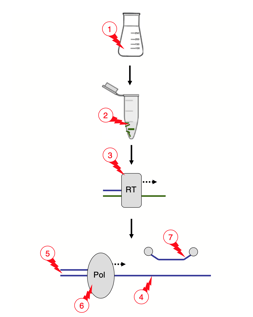If the internal control (HEX) signal is 'no Cq', or comes up late (Cq>30), there may be something inhibiting the PCR reaction.
Plants contain a number of substances that can inhibit PCR reactions from successfully occurring. These substances are make up a large part of the plant; pectin, polyphenols, polysaccharides, and xylan. Preparing the sample well, and properly removing all of the possible inhibitors is a very important when performing the DNA extraction. While ethanol is an important part of the washing steps in the protocol, ethanol is also a strong inhibitor of PCR. It is very important to allow all the ethanol to evaporate from the beads before eluting the DNA. A helpful tip can be to go back with a p10 and pull the last 1-2µL out of the center of each well when removing the last bit of ethanol.
If increased ethanol drying time does not help you internal control signal try diluting the eluted DNA 1:10. If this helps improve the signal it is a sign of now diluted inhibitors still being present in the extraction.
Below is figure depicting the many places PCR inhibitors can come into play during the sample extraction or the PCR reaction itself.

Inhibitors can come into play at many parts of the polymerase chain reaction procedure. The figure highlights many of places inhibitors can come into play
- The nucleic acids may interfere with surfaces of the vessels.
- Substances may react with nucleic acids during sample processing and extraction.
- Substances inhibit reverse transcription. (However, reverse transcription step is only necessary with performing PCR on RNA, say when looking for RNA virus or at gene expression)
- Substances can degrade or modify the template DNA.
- Inhibitors can hamper the annealing of primers to the template.
- Inhibitors can degrade, inhibit, or alter the DNA polymerase.
- Substances may interfere with probe fluorophores.
Schrader, C., Schielke, A., Ellerbroek, L. and Johne, R. (2012), PCR inhibitors – occurrence, properties and removal. J Appl Microbiol, 113: 1014-1026. doi:10.1111/j.1365-2672.2012.05384.x
